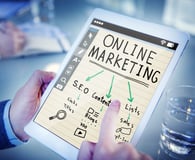Index Content
Inbound marketing has to constantly reinvent itself in order to survive, and it does so by creating new concepts that help to optimise marketing strategies. Have you heard of inbound lead nurturing and are not sure what it consists of? In this post we explain what inbound lead nurturing is, we tell you what the process is like step by step and we will tell you all the advantages it has. Keep reading!
Lead nurturing, as its name suggests, is a technique within inbound marketing that is based on creating valuable relationships with our users with a clear objective: to accompany them during their buying process and ensure those sales. In short: a technique that accompanies the leads during their buying process to ensure the sale. Once we understand that lead nurturing is the link between marketing and sales, we will explain what the process consists of.
Lead Nurturing process step by step
- Set objectives
As in any good marketing strategy, the first step is always to set objectives, of course, the main goal would be to achieve the highest percentage of sales possible, but of course, we need more specific objectives as this could be the goal of any company. - Define your buyer persona
This procedure is mainly based on offering someone what they need, and to know what they need you must know them well, know what your target is and be very aware of the changes that may occur with respect to those needs. - Choose the tools
The lead nurturing process consists of sending a large number of personalised communications at certain times, so it would be crazy for a person to do it, these are processes that must be automated to make sense. For this there are many marketing tools, one example is Hubspot itself. Here is a list of ideas for lead nurturing tools:
- Sending emails
- Landing pages
- Automation
- Forms
- Take care of the content and adapt it
It is not enough to be constant and send content to users, you must also ensure that this content is of value, this way you will create a relationship with the user and they will not feel like one of the many users to whom you send the same message. You can achieve this by simply adding the user's name, it will give an impression of closeness. We must also adapt this content to the phase in which the customer is, users go through different phases from when they encounter your brand until they become a customer. You will not send the same message to a user who does not know what they want and does not know if your brand can offer it as to a user who is clear that they will bet on your brand but has not yet done so.
- Watch when to do and when not to do
You have to be timely when sending messages, one of the most common mistakes when carrying out our lead nurturing strategy is to saturate the user with too many messages at times that are not necessary, it can also happen the other way around and send fewer messages than you should and thus achieve that the relationship with the customer cools down. The most important thing to avoid both things is that the messages have the right and necessary information, no more and no less, a concise message but containing everything we need. - Loyalty
Once you have managed to get the user to become your customer, you can't just forget about it, that communication has to continue because the buying process has not ended here, when a sale ends, the end of the relationship with that customer is only the company's choice. You must maintain a flow of communication with them that makes them remember that your brand exists for future purchases.
Benefits of using the lead nurturing technique
- Immediate marketing method
With this you contact your leads in a faster way, which builds a stronger relationship in less time. But of course, for this you have to be quick, it is useless to send a message to a user who has been on your website for 2 weeks, because he has probably already satisfied his needs on another website. That is why the welcome message is very important, in this you take advantage of the exact moment in which the user has given his data to get some kind of information or offer and, as you already have his interest, you do not need anything else. - Increase ROI
As it is as simple as having an automated tool, you do not invest practically no money, therefore, any benefit we get is a very big return. - Easy to implement
There is no big cost or difficulty to implement this type of method, you can simply use any automation tool such as hubspot and it will send the messages for you at the right time.
- Improved relationship with the lead
These messages and the follow-up that is done to the lead, manages to form a bond between customer and brand that strengthens the relationship between the two and makes the lead see the company as more humanised.
- Segment your database
Thanks to this communication with the lead, you will be able to acquire new data about him/her that will help you to segment him/her, that is to say, by simply knowing his/her sex, you can already segment, if, for example, you know the place where he/she lives, it would be very valuable information when segmenting as it will help you in future campaigns to know which leads to send certain information to. If for example you have an events company, and you know that a person has gone to a certain event in Barcelona but has had to travel from Valencia, if later there is a new event in Valencia, you can send him/her this information, which can end up in a sale.
- New opportunities
Thanks to what was explained in the previous point, what you get is information that these leads have generated by making a purchase. And what is even more important, the process that the lead has carried out to get to the moment of purchase. This helps to create patterns of behaviour, because, although each lead is different, there are patterns of action that tend to be repeated frequently.
Now that you know what lead nurturing is, how to follow its process and the great advantages it brings to your business strategy, you have to start right now with this new and effective inbound marketing technique.

-1.webp?width=200&name=imagotipo_occam%20(1)-1.webp)



